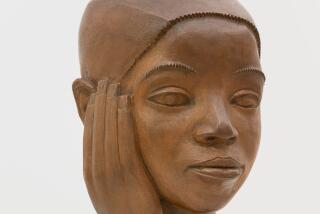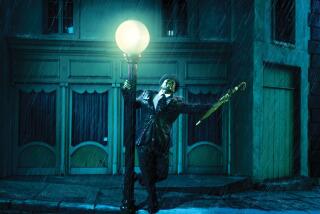A Private Portrait of James
- Share via
The American Girl. Not least among Henry James’ many innovative and enduring literary achievements was his masterly, searching and profoundly sympathetic portrayal of that fascinating new phenomenon. Embodied in Daisy Miller or Isabel Archer, the Jamesian heroine is a fresh, venturesome spirit, unconventional not so much in the sense of deliberately defying convention, but in the sense of neither knowing nor caring about it.
Indeed, when it came to portraying women as complex human beings, few male writers could match James, whose insight and understanding only deepened as the years went by, culminating in the creation of heroines like Milly Theale of “The Wings of the Dove” and Maggie Verver of “The Golden Bowl.” It is no secret that two of the real-life women who mattered most to James were his cousin, Minny Temple, and the then-popular novelist and story writer Constance Fenimore Woolson. Not only were these two women the models for his extraordinary heroines, but James’ relationships with them were probably the closest he ever came to having a love affair.
James’ cousin Minny, two years his junior, was one of four sisters. Orphaned in their youth, the girls grew up with less than usual supervision and more than the usual freedom. Intelligent, inquisitive, intensely alive, Minny in particular embodied all that her cousin Henry admired in American womanhood. Writing from England, James expressed his disappointment at the women he was meeting there: “I revolt from their dreary deathly want of--what shall I call it?--Clover Hooper has it--intellectual grace--Minny Temple has it--moral spontaneity.”
Minny’s untimely death at age 24 from consumption did not end their relationship, for James used his intimate knowledge of her personality in the creation of Isabel Archer in “Portrait of a Lady.”
“With no character of yours have I ever found myself so much in sympathy,” declared Woolson, who had been born five years before the original of Isabel Archer. A great-niece of James Fenimore Cooper, Woolson was a fairly successful popular writer when she met James in Europe in 1880, a decade after Minny’s death.
“Fenimore,” as James called her, was more mature, less impulsive than Minny, but similarly generous, self-expressive and independent-minded. She and James found in one another someone to whom each could speak freely and frankly. Yet, like Temple, Woolson met a tragic end, leaping or falling from a window in Venice in 1894.
“We approach, here, ties more intimate than sex, closer than those of family and friends,” writes Lyndall Gordon in her intriguing new book, “A Private Life of Henry James.” Temple and Woolson were, in her opinion, “the ghostly companions of his art.” The author of critical biographies of Charlotte Bronte, T.S. Eliot and Virginia Woolf, Gordon presents a wealth of material about these two women, their effects on Henry James and his on them.
In him, these women found a man who looked upon women as complex and complete human souls rather than as sex objects. Through them, James gained deeper insights into women’s minds. Sadly, to judge from their stories as told here, both women were led to expect more in the way of commitment and support than James was prepared to give them.
But if Gordon leaves us with the impression that James the man may have failed the women in his life, she also makes clear her belief that James the artist gives us a vision of manhood and womanhood transcending the conventions and prejudices not only of his era, but of our own.
Drawing on a rich treasure trove of letters, journals and other primary documents, Gordon fills in her subjects’ backgrounds in a manner that is sometimes more overwhelming than enlightening. Her narrative thrust is sometimes lost in the welter of detail and in the feverishness of her approach. This lack of an overview may make it somewhat difficult for the nonspecialist reader, though much of it is fascinating. Gordon’s portraits of Temple and Woolson bring these forgotten women back to life. And her portrait of James as an artist and serious moralist is a welcome antidote to those who view him only as a rarefied aesthete.
More to Read
Sign up for our Book Club newsletter
Get the latest news, events and more from the Los Angeles Times Book Club, and help us get L.A. reading and talking.
You may occasionally receive promotional content from the Los Angeles Times.








